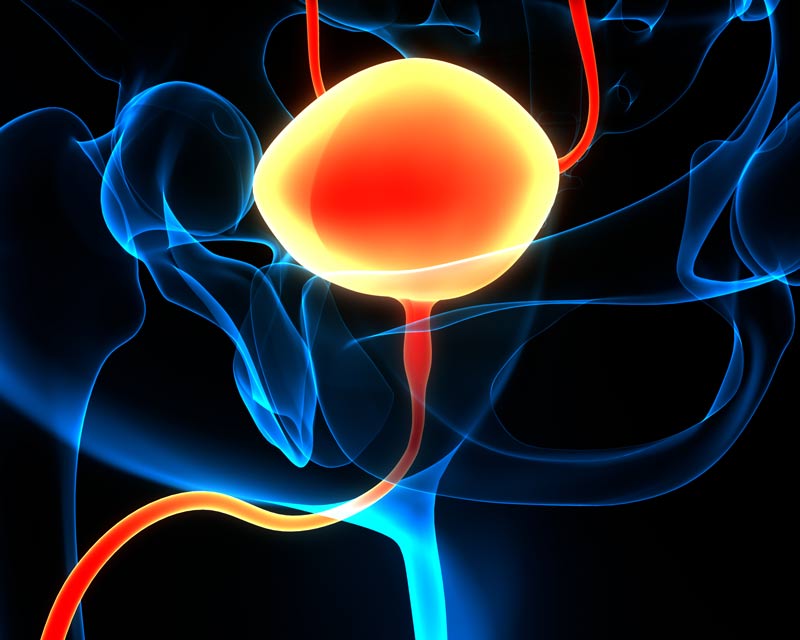
Robotic-assisted surgery with intraoperative radiation offers new hope to patients with local cancer recurrence
 Benign urinary tract pathology in the pediatric population is the underlying focus of two ongoing studies by Christina Ching, MD, a pediatric urologist at Nationwide Children's Hospital and associate professor in the Department of Urology at The Ohio State University College of Medicine.
Benign urinary tract pathology in the pediatric population is the underlying focus of two ongoing studies by Christina Ching, MD, a pediatric urologist at Nationwide Children's Hospital and associate professor in the Department of Urology at The Ohio State University College of Medicine.
Dr. Ching is working to identify biomarkers in the urine of pediatric patients with swelling of the kidney, called hydronephrosis, in the hope of finding new ways to identify signs of urinary obstructions that require surgical repair. Disease surveillance may also be improved as a result of this ongoing study.
In a separate study, Dr. Ching is looking at the signaling pathway that’s activated in the presence of urinary tract infections (UTIs). She aims to see whether this pathway is linked to how susceptible someone is to UTIs, or to their outcomes from such infections.
Hydronephrosis may occur due to the inability of urine to drain from the kidney into the ureter, and may be a result of a ureteropelvic junction obstruction. These obstructions can cause increased pressure in the kidney that leads to decreased kidney function. In pediatric patients, this may occur due to a congenital abnormality. This finding is sometimes seen in an ultrasound during the prenatal period. Often the hydronephrosis will resolve on its own; however, in 10—15% of children, it may persist.
Unlike in adults who typically will have symptoms, in the pediatric population, patients with significant hydronephrosis may be asymptomatic even while the condition is causing silent damage to the kidney. This can complicate the diagnosis as it is then completely reliant on imaging techniques to identify and diagnose. Currently, the gold standard for diagnosis is a nuclear or renal scan, which is invasive as it requires the insertion of an intravenous catheter. It also exposes the child to radiation, which is especially concerning if serial imaging is required for disease surveillance.
As primary investigator, Dr. Ching has an interest in identifying other means of diagnosing obstruction and has been evaluating the utility of certain biomarkers — specifically a panel of antimicrobial peptides — in this patient population. She has compared levels of urinary antimicrobial peptides between children with hydronephrosis requiring surgery to that of healthy children, as well as to urine samples obtained from these same patients after surgery. This work aims to find ways to augment or even replace the invasive imaging studies necessary for hydronephrosis diagnosis and surveillance.
Dr. Ching found that in children requiring surgical intervention for hydronephrosis, the level of biomarkers increased in four (NGAL, HIP/PAP, BD-1, and LL-37) of five antimicrobial peptides measured — a novel finding, because antimicrobial peptides have primarily been studied in the setting of urinary tract infection. Her findings suggest that these peptides may change in other forms of urinary tract stress or injury, such as obstruction.
Peptide levels were again assessed after surgery, and improvement was noted in two (HIP/PAP and BD-1) of the four markers tested — the level of marker BD-1 returned to “normal” after successful treatment.
Continued study is needed to determine whether markers individually or as a panel could augment current diagnostic imaging or even replace it. For this study, Dr. Ching is also collecting urine samples in children with hydronephrosis found on their prenatal imaging. "We are using this data to try to predict which children will have a problem that will not resolve on its own and will eventually require surgery,” she says. “Ultimately, this can enable a clinician to set better family expectations and specifically tailor the medical and surgical care provided."
Another of Dr. Ching’s interests is the study of urinary tract infections (UTIs) and how the body responds to pathogens in the urinary system. UTIs are most often caused by a specific type of bacteria: uropathogenic E. coli (UPEC). Infections that travel to the upper urinary tract and those that recur chronically have been associated with significant morbidity in children. The only treatment currently available is antibiotics, which can be overused, as excessive antibiotic treatment can lead to serious side effects and antibiotic resistance. Alternative therapies for patients with UTIs are greatly needed.
Dr. Ching and her team are studying the body's natural response to infection. Invasion of the urinary tract by bacteria triggers an innate response to protect the patient through cytokine and chemokine production. One such cytokine is IL-6. Dr. Ching has a K08 National Institutes of Health (NIH) grant award through the National Institute of Diabetes and Digestive and Kidney Diseases to study the role of IL-6 in a urinary tract infection.
“We know that this pathway is initiated during UTIs, but we are not sure why,” Dr. Ching says.
“We're trying to understand if there is something that innately makes someone more susceptible to infection.”
Prior studies have shown that the body makes IL-6 in response to infection, and some studies have also suggested IL-6 expression is related to UTI severity and outcome such as renal scarring. By studying this signaling pathway, Dr. Ching and her team aim to learn new ways to prevent and treat an infection. It may also inform ways to limit the immune response, which may be needed if the immune response itself becomes a threat.
Dr. Ching works closely with the nephrology team at Nationwide Children's Hospital and the Department of Urology at Ohio State, and she’s grateful for the collaboration and support provided by the Abigail Wexner Research Institute and the Center for Clinical and Translational Research. Her research is currently funded by the NIH with prior funding by the American Urological Association — Urology Care Foundation, Societies for Pediatric Urology and the American Association of Pediatric Urologists.
She’s quick to point out the importance of cooperative projects. Though Dr. Ching’s focus of the impact of infection and obstruction is in the pediatric population, her results could have a more universal meaning and reach a broader audience.